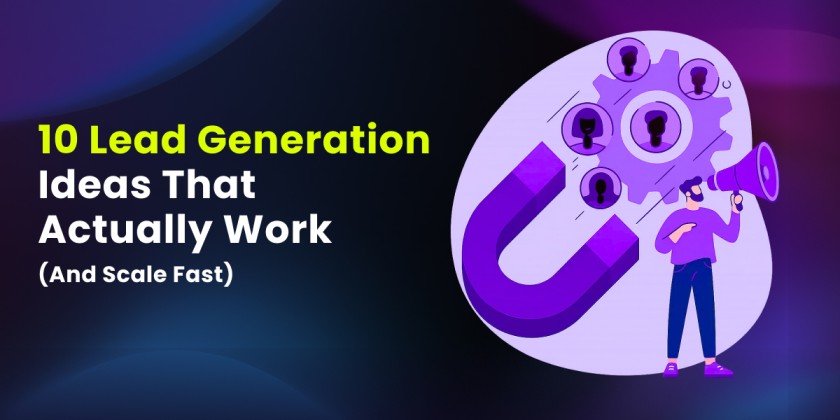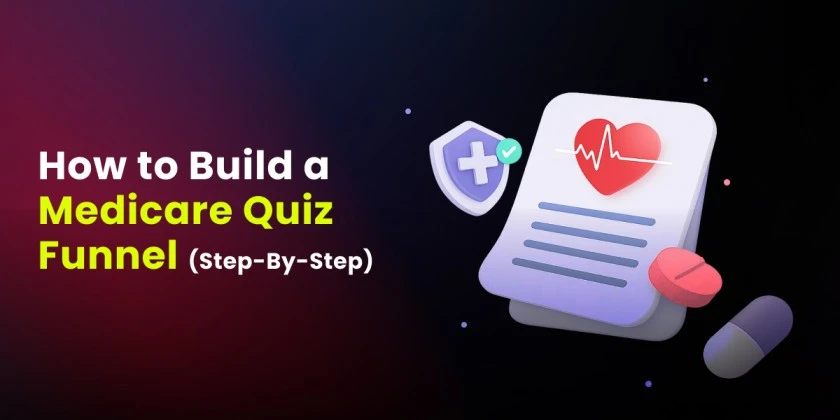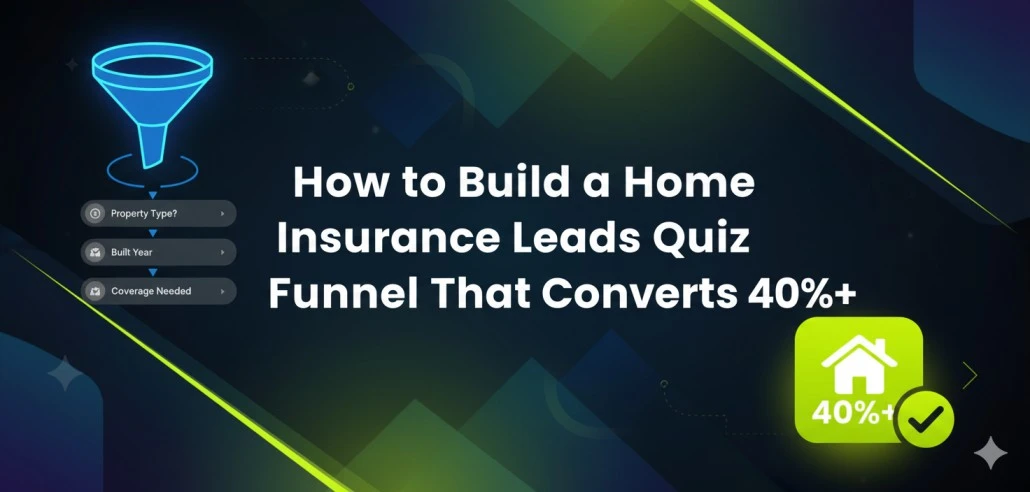Most marketers treat lead generation and sales conversion as the same thing. This simple mistake is costing businesses thousands in wasted ad spend and missed revenue opportunities.
While both processes help grow your business, they serve completely different purposes in your marketing funnel. Lead generation captures interest and contact information, while sales conversion turns those prospects into paying customers.
Getting this distinction right isn’t just marketing theory. It’s what separates a profitable funnel from a budget drain.
In this guide, we’ll break down the difference between lead generation vs sales conversion, how they work together, and why you need to master both for real business growth.
What is Lead Generation?
Lead generation is the process of attracting potential customers and capturing their contact information. It’s the first stage in the sales pipeline, motivated only by building interest and creating a pipeline of potential customers who may eventually convert.
The Goal of Lead Generation
The primary goal is straightforward: to capture qualified leads. This may involve:
- A user completing a form to read a whitepaper
- Someone is signing up for a webinar
- An individual who is typing in their email address on a product waitlist
- A quiz respondent who provides their phone number
Common Lead Generation Tactics
- Landing pages with forms
- Multi-step quizzes (especially effective when built with tools like LanderLab)
- Gated content (eBooks, webinars, whitepapers)
- Paid ads leading to opt-in pages
- Newsletter signups
- Referral incentives
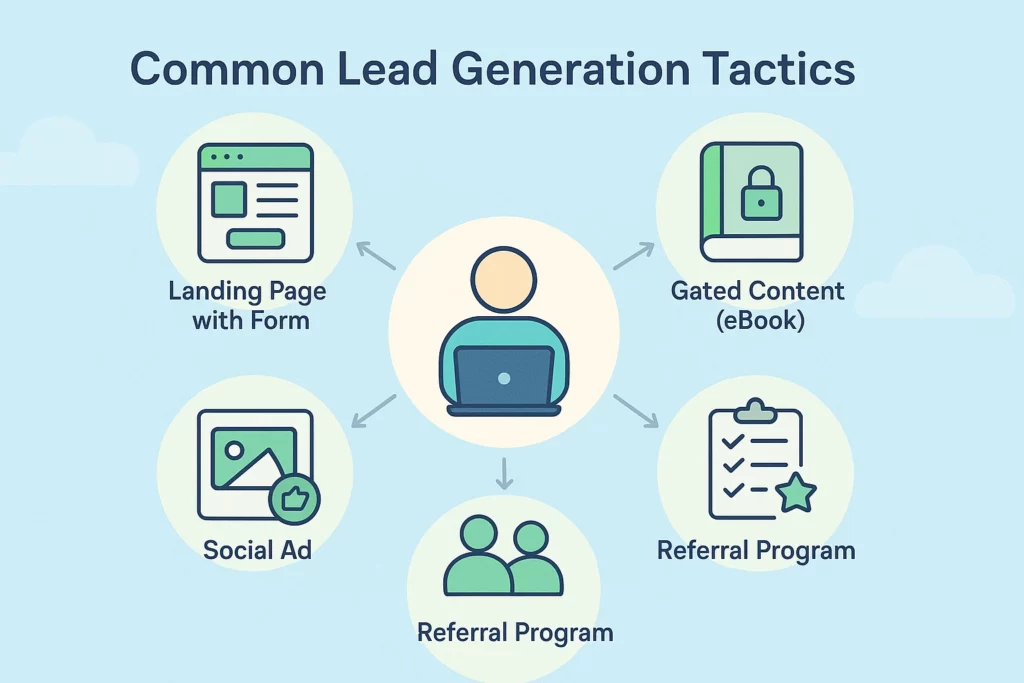
Lead gen works best when value is offered upfront in exchange for minimal friction (like name, email, or phone number).
What is Sales Conversion?
Sales conversion is the act of turning a lead into a paying client. It’s the moment when someone decides to make a purchase, subscribe, or take an action that generates revenue.
The Role of Sales Conversion
The focus is now on the closing of the deal.
Conversion sales isn’t just about traffic or form fills, it’s about revenue generation. Your lead already knows your offer; now you need to eliminate fear, minimize friction, and offer a strong reason to respond.
Common Sales Conversion Tactics
- Sales calls or demos
- Email follow-up sequences
- Remarketing campaigns
- Checkout optimization
- Live chat & sales support
- Limited-time offers or discounts
Tools like CRM integrations, conditional logic, and automated follow-ups can accelerate the path from lead to sale.
Lead Generation vs Sales Conversion: Side-by-Side Comparison
| Category | Lead Generation | Sales Conversion |
|---|---|---|
| Main Objective | Attract potential customers and collect their contact details | Convert qualified leads into paying customers |
| Funnel Stage | Top or middle of the funnel | Bottom of the funnel |
| Target Audience | Cold or warm traffic (not yet ready to buy) | Warm or hot leads (closer to making a purchase) |
| Typical Strategies | Quizzes, forms, gated content, ads | Retargeting, sales calls, optimized checkout flows |
| Performance Metrics | Lead volume, cost per lead (CPL) | Conversion rate, revenue, return on investment (ROI) |
| Tools Commonly Used | Lead magnets, landing pages, and email capture tools | CRMs, sales pages, and automation tools |
| Call-to-Actions (CTAs) | “Sign Up,” “Download Now,” “Get a Quote” | “Buy Now,” “Start Free Trial,” “Subscribe” |
| Conversion Timeline | It can take time; early-stage engagement | Usually immediate or after nurturing |
| Example Activities | Submitting a quiz, signing up for a webinar | Making a purchase, booking a demo, or starting a subscription |
Why the Confusion Between the Two?
Lead generation and sales conversion are highly interconnected, which is why marketers often confuse the two.
But the reality is:
- You can’t convert them until you create them first.
- You shouldn’t create leads that you’re never going to convert.
The two roles are interdependent but use distinct strategies, messaging, and tools.
Combining the two opens the door to poor-performing campaign results, confused KPIs, and underperforming funnels.
How Lead Generation and Sales Conversion Work Together in Practice
Knowing the difference between lead generation and sales conversion is helpful. The strength lies in understanding how they complement each other, step by step, to fuel business expansion. The step-by-step explanation of how the two processes play a role in an average marketing funnel is outlined below:
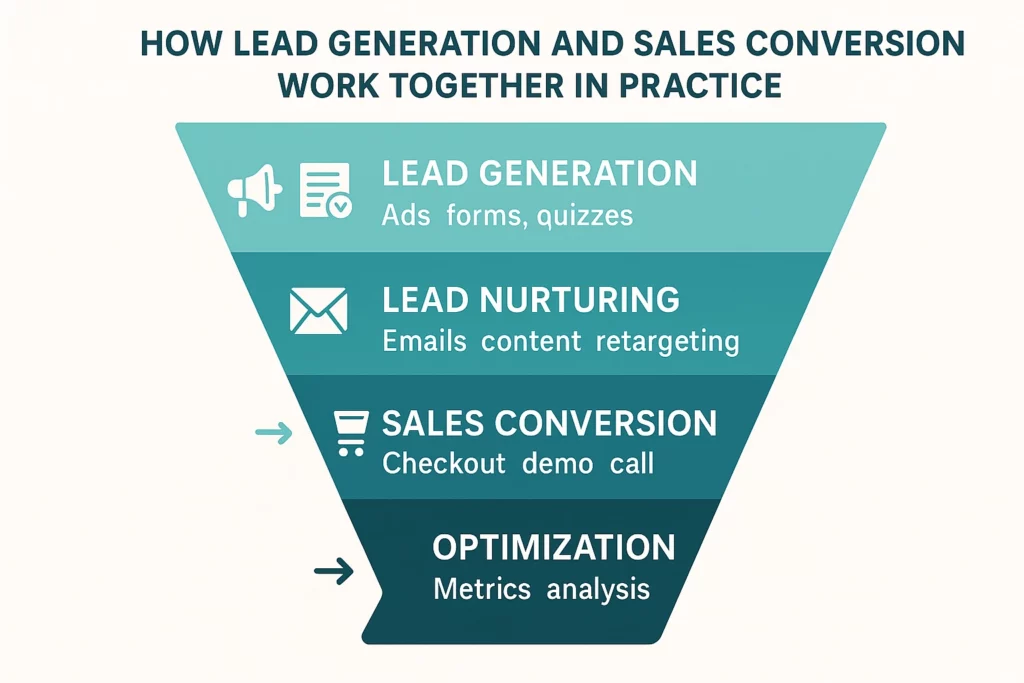
1. Attract → Generate Interest
At the top of the funnel, you aim to capture attention and collect leads. This typically involves content marketing, social media, paid advertising, search engine optimization, and other awareness techniques.
- A blog article invites readers to download a free checklist.
- A social ad offers a webinar in exchange for contact information.
- A quiz engages users and collects their email addresses upon submission.
This is lead generation. Your priority is visibility, engagement, and collecting contact information.
2. Engage → Build Trust
Once you’ve obtained the lead, you must nurture it. This phase usually involves:
- Educational emails
- Case studies
- Product comparisons
- Retargeting campaigns
The aim here is to establish credibility, show value, and get the brand top-of-mind while advancing the lead further in the buying process.
3. Convert → Close the Sale
Having acquired the lead for your product or service, conversion is where it gets next. That means:
- Direct sales outreach
- Personalized offers
- Product demos
- Frictionless and easy checkout processes
It’s all about responding to intent from curiosity to commitment.
4. Analyze → Optimize the Funnel
Lead generation and sales conversion are fluid. You must track constantly along the whole funnel:
- Which source is best qualified?
- Where are customers dropping off in the buyer’s journey?
- What content or CTA is driving at the highest rate?
Operating off of data and leveraging it to optimize both acquisition and conversion isn’t just about generating leads; it’s about turning them into customers.
5 Key Differences Between Lead Generation and Conversion
1. The Goal
- Lead Gen = Build a list of prospects.
- Sales Conversion = Monetize that list.
2. Funnel Stage
- Lead Gen targets top or middle-funnel traffic.
- Sales Conversion activates the bottom funnel interest.
3. Messaging
- Lead Generation messaging is curiosity-driven and broad.
- Sales Conversion messaging is benefit-driven and specific (price, urgency, trust).
4. Timeline
- Lead Gen can be immediate or passive (e.g., content downloads).
- Sales Conversion often happens over time (via retargeting, emails, or demos).
5. Optimization
- Lead Generation is optimized for volume and cost efficiency (CPL).
- Sales Conversion is optimized for revenue (LTV, ROI, conversion rate).
What Connects Lead Generation to Sales Conversion?
Whereas lead generation and conversion to sales are separate, the bridge between them is process, not accident. The secret is in how you handle leads after capture, qualifying, nurturing, and converting them deliberately.
Here’s a successful bridge:
1. Segmentation Based on Behavior
After capturing leads, segmenting them based on behavior or data (e.g. interest, industry, purchase intent) ensures follow-up communication is timely and relevant.
- Someone who downloads a whitepaper may need to be educated.
- Someone who requests a demo is more likely to make a purchase.
2. Lead Qualification Criteria
Establish measurable indicators of when a lead is “sales-ready”, which can be based on demographics, level of engagement, budget, or timing.
- Score or filter leads using form data and interactions.
- Transfer only high-intent leads to your sales team.
3. Progressive Nurturing
Not every lead will convert right away. Develop a flow that establishes trust with:
- Educational material
- Testimonials and case studies
- FAQs or comparison guides
Your goal is to remain top of mind until they’re ready to make a move.
4. Consistent Follow-Up
Speed and consistency are critical. Through either automated processes or direct personal contact, do not allow leads to languish.
- A 24–48 hour follow-up increases conversion capability dramatically.
- Push messaging in the direction of their first touchpoint or interest
5. Feedback Loop Between Marketing and Sales
- Marketing must continually produce context-relevant leads that turn into sales. Sales, for their part, need to provide feedback regarding lead quality and conversion issues.
- This cycle ensures that lead generation activity remains aligned with actual conversion results.
- It also assists in more upstream targeting and messaging.
Metrics That Matter
| Metric Name | Applies To | Why It Matters |
|---|---|---|
| Cost Per Lead (CPL) | Lead Generation | Measures the efficiency of capturing new prospects |
| Conversion Rate | Sales Conversion | Measures how well leads turn into buyers |
| Lead-to-Sale Rate | Both | Tracks the quality of leads and the effectiveness of the funnel |
| Time to Conversion | Sales Conversion | Indicates sales cycle length |
| Lead Quality Score | Lead Generation | Helps prioritize high-intent leads |
Common Mistakes Marketers Make When Confusing Lead Gen with Sales Conversion
Even seasoned teams fall into habits that compromise the connection between lead generation and sales conversion. Some of the key blunders that have a profound effect on funnel performance are discussed below:
1. Treating Lead Generation as a Volume Game
Concentrating solely on the quantity of leads generated, without considering quality or fit, fills pipelines with bloated, disappointing results. Salespeople are often overwhelmed with unqualified contacts, which wastes their time and energy.
Instead, establish qualification standards upfront. Use forms to qualify serious prospects, and not just curious browsers.
2. Rushing Leads Too Rapidly into Sales
Not everyone is ready to buy. Most require education, nurturing, or time for consideration. Cold lead generation can create friction, erode trust, and lower close ratios.
What to do instead: Have a lead-nurturing process (via email, content, retargeting) in place before opening sales conversations.
3. Mismatched Messaging
Lead capture-optimized messaging tends to be broad, informative, or interest-oriented. At best, attempts to convert fail to address objections, timeliness, or the reason for the decision.
Instead, match messaging to the buyer stage. Lead gen content must inform or intrigue; sales content must convince and reassure.
4. Measuring the Wrong Metrics
Using lead gen metrics (e.g., CPL) on sales order, or vice versa, skews performance measurement. It results in short-term efficiency-oriented decisions versus long-term profitability.
Instead, use stage-specific metrics: CPL and lead quality for lead generation; conversion rate, sales velocity, and ROI for sales performance.
5. When Sales and Marketing Don’t Sync
When sales and marketing teams lack aligned goals or effective feedback loops, the result is a fractured customer experience. Leads fall through the cracks, and learnings are wasted.
Instead, establish one streamlined pipeline process. Periodically align both teams with common KPIs, lead definitions, and funnel feedback.
Conclusion: lead generation vs sales conversion
Lead generation and sales conversion are not opposing movements; they are two necessary movements in one funnel. One fills the pipeline, and the other presents a conversion opportunity for profit.
The error that many companies make is isolating them: creating leads with no viable pathway to conversion, or pursuing conversions without topping off the funnel. Actual growth occurs when you’re addressing these as related, data-driven, and customer-centric.
By knowing the difference and designing processes that align intent, timing, and message, you don’t merely create more leads or sell more. You make a system that consistently moves the right people to the right results.
Build Landing Pages That Capture Leads & Convert
LanderLab helps you design high-performing landing pages built for both lead generation and sales no coding needed.

